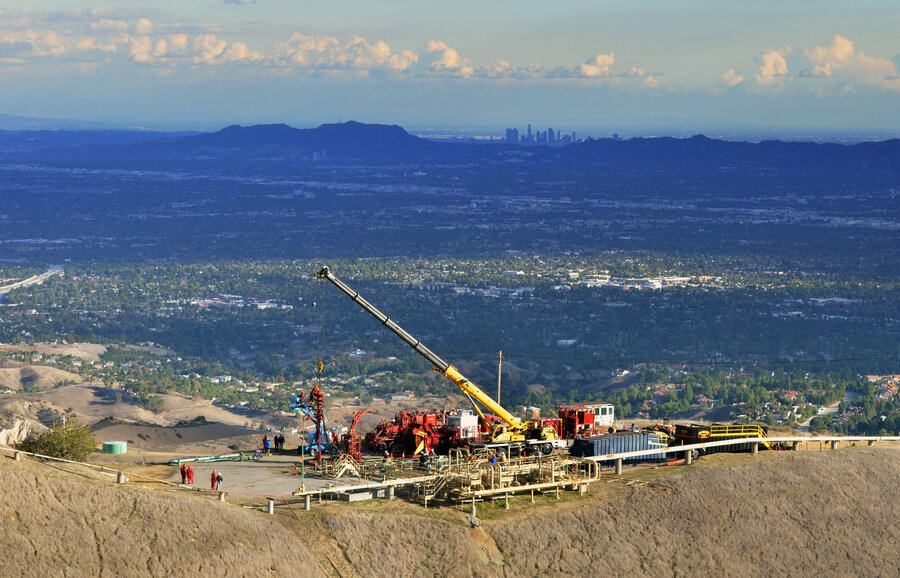Huge gas leak undermines California's climate change plans
Loading...
A two-month-long natural gas leak that has caused local evacuations and Federal Aviation Administration flight restrictions in southern California is highlighting the need to better control methane emissions from United States oil and gas production and storage.
On Oct. 23, Southern California Gas Company discovered the leak from a storage well at the utility's Aliso Canyon facility in the Santa Susana Mountains at the northwestern end of the San Fernando Valley.
At its peak in late November, the leak from the fifth-largest underground gas storage facility in the US was releasing 58 metric tons of methane an hour, according to preliminary estimates from the California Air Resources Board. By mid-December, the release had eased to 36 metric tons an hour.
Although methane is lighter than air, winds in the area can move some of the gas downhill into populated areas. Residents have reported illnesses, and the leak has triggered an exodus from the community of Porter Ranch, about 1,200 feet below the site and roughly a mile away.
So far, Southern California Gas has relocated more than 2,000 families from Porter Ranch, with another 2,600 reportedly awaiting help relocation help from the company. The FAA has also imposed flight restrictions around the site.
The effect of the leak on the state's greenhouse-gas emissions is comparable to adding 7 million cars to the road, says Timothy O'Connor, director of the Environmental Defense Fund's oil and gas program in California.
In a letter released Wednesday to the people the leak has affected, Dennis Arriola, the gas company's president and chief executive officer, apologized for the event and tried to assure residents that “we are working as quickly and as safely as possible to stop the flow of natural gas from the leak.”
The gas is under enormous pressure – some 3,000 pounds per square inch. Southern California Gas initially tried to pump brine down the well in an unsuccessful attempt to counteract that pressure. The company is now drilling the first of two relief wells that must reach more than 8,000 feet below the surface to allow workers to seal off the leaking well. The second well, which the company has said it plans to begin sinking next month, is a backup. If all goes well, the relief well should be finished by March or April, the company estimates.
In addition, the company has been drawing gas more heavily from Aliso Canyon than it normally would in hopes of reducing the pressure.
“These fields tend to fly under the radar until there's a catastrophe,” Mr. O'Connor says. In 2001, for instance, gas migrated from a nearby underground storage area to formations underneath Hutchinson, Kansas. It resulted in a gas explosion that triggered a fire downtown while gas-infused brine shot like fountains from long forgotten brine wells.
Current efforts to craft methane regulations at the federal level wouldn't cover facilities like Aliso Canyon, O'Connor explains. Draft regulations aim to control emissions from surface equipment and injection wells, but not from gas-storage wells.
That is likely to change, at least at the state level, he adds.
In California, new rules regarding methane emissions “have been in the works, but storage hasn't been part of them,” he says. “Those new rules are likely to include storage” because of the leak.








